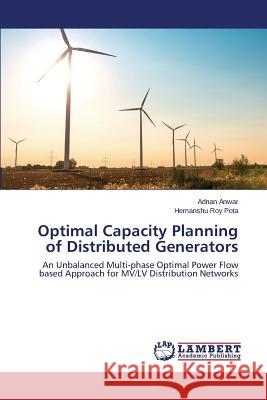Optimal Capacity Planning of Distributed Generators » książka
Optimal Capacity Planning of Distributed Generators
ISBN-13: 9783659593734 / Angielski / Miękka / 2014 / 160 str.
In this book, a method based on a sensitivity analysis and quadratic curve-fitting technique for power loss reduction in a low-voltage distribution area is proposed. For determining the optimum generation capacity of multiple DG units, a new methodology based on an unbalanced multi-phase optimal power flow (UM-OPF) is also presented. During the formulation of the UM-OPF, an optimisation algorithm is developed in Matlab and the unbalanced multi-phase power flow is solved using the Electric Power Research Institute's (EPRI) software OpenDSS. To ensure a global minimum loss profile, adaptive weight particle swarm optimisation (AW-PSO) algorithm is used which shows better convergence profile compared with basic PSO algorithm. Validation of the proposed methodologies is also conducted using an exhaustive search algorithm. The results obtained from the proposed methods show that significant loss reduction is possible using multiple optimum sized DG units. To determine the optimum DG capacity, with varying generation and load, a cost minimisation planning methodology is also proposed. During the planning process, different DG technologies are considered.
In this book, a method based on a sensitivity analysis and quadratic curve-fitting technique for power loss reduction in a low-voltage distribution area is proposed. For determining the optimum generation capacity of multiple DG units, a new methodology based on an unbalanced multi-phase optimal power flow (UM-OPF) is also presented. During the formulation of the UM-OPF, an optimisation algorithm is developed in Matlab and the unbalanced multi-phase power flow is solved using the Electric Power Research Institutes (EPRI) software OpenDSS. To ensure a global minimum loss profile, adaptive weight particle swarm optimisation (AW-PSO) algorithm is used which shows better convergence profile compared with basic PSO algorithm. Validation of the proposed methodologies is also conducted using an exhaustive search algorithm. The results obtained from the proposed methods show that significant loss reduction is possible using multiple optimum sized DG units. To determine the optimum DG capacity, with varying generation and load, a cost minimisation planning methodology is also proposed. During the planning process, different DG technologies are considered.











